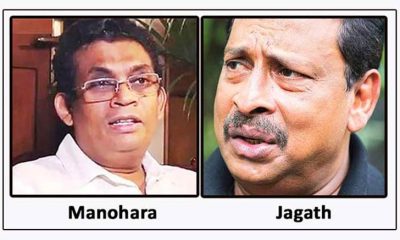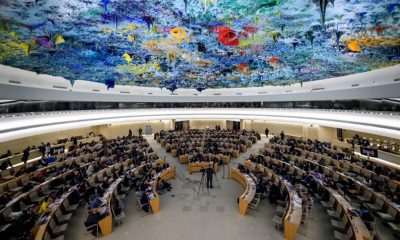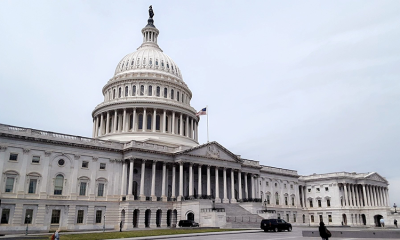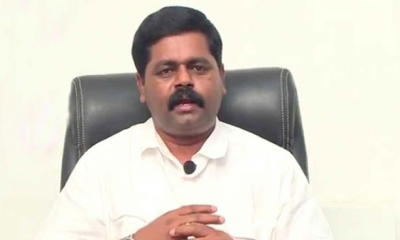Features
Defence and Diplomacy are linked
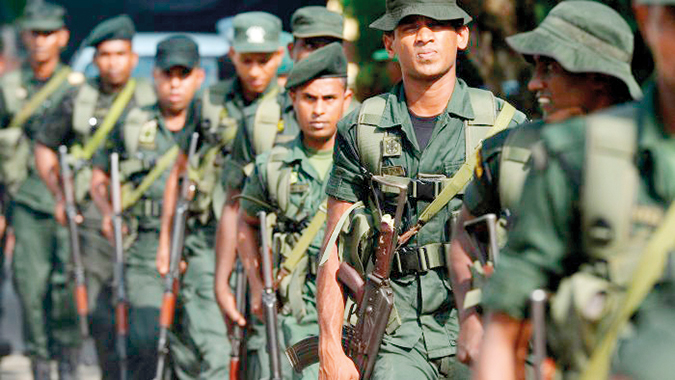
Dr Sarala Fernando
Defence expenditure has not been a subject of public discussion in Sri Lanka, which was understandable during the difficult years of the armed conflict. Even after the armed conflict ended , there was no public opposition to the continued dedication of a major share of budgetary resources to the Defence Ministry to spearhead the reconstruction and rehabilitation of the conflict- affected areas in the North and East.
Since that time, the Army has provided leadership in a number of areas of interest to the UN. For example, the de-mining programe clearing thousands of acres for the safe return of civilians, has created positive publicity for Sri Lanka and enabled the signing of related international agreements, all contributing to building the image of a responsible military on international fora.
Since deploying its first contingent in 1958, official press releases remind that Sri Lanka has been contributing to UN Peacekeeping operations in some of its most hostile and demanding deployments, and has 557 including female officers currently in service toward ensuring international peace and security. Our authorities should also revive the initiative to collect illegal small arms and light weapons island-wide under the UN SALW (Small Arms and Light Weapons) programme. This will address concerns over rising gun crime and discourage new domestic gun manufacturing.
Since the end of the armed conflict, Sri Lankans have waited patiently over a decade now for the peace dividend in the hope that it would enable more robust social expenditure. Now that Sri Lanka has declared bankruptcy and opted to go to that “lender of last resort”, several articles are appearing commenting on down sizing of the military, re-balancing the three forces in view of current and emerging threats etc, based on some expectation that limits would be imposed on defence expenditure under the IMF programme.
In such a historical context and given the experience and assets within the security forces, it is to be expected that any strategic planning for “right sizing” the defence budget, would be undertaken in-house within the security forces. This article suggests that the Foreign Ministry with its research and training arms, the Lakshman Kadirgarmar Institute (LKI) and the Bandaranaike International Diplomatic Training Institute (BIDTI) should also be involved in these discussions. Any re-shaping of defence strategy would benefit from the perspectives of diplomacy especially in relation to developments in the wider world, some of which are mentioned in this article.
From the initial public statements by the Defence Ministry it seems the emphasis has been on troop reduction. The Deputy Minister of Defence announced recently that the Ministry planned to reduce the number of soldiers from the current strength of 200,783 to 135,000 by 2024. Is this to be achieved through creation of a reserve as some academics have suggested? The Air Force has just announced a strength reduction from 35,000 to 27,000 including a policy to increase its female share to 30%.
However, in this exercise, to avoid confusion, public diplomacy would call for the holding back of all media advertisements for new recruitment to the armed forces. There are lessons to be learned also from elsewhere: the recent initiative to reduce the public service through a scheme to grant five years no-pay leave abroad, has predictably led to the departure of the most talented and capable, leaving Ministries in a quandary to retrain those remaining behind who are demoralized, compounding human resources management problems. It is also worth noting that Sri Lanka is reducing its trained forces at a time when some developed countries are facing recruitment problems to their forces and offering many incentives even to foreign nationals.
Our Deputy Minister of Defence also referred to a “strategic blueprint” aiming to produce “a technically and tactically sound and well-balanced defense force by the year 2030 in order to meet upcoming security challenges”. Such a strategic plan would be a new and welcome development however the question remains how other Ministries, concerned institutions and a public consultation would be factored into the in-house deliberations.
Any such strategic planning should take into account that Sri Lanka is probably unique in that it is recognized internationally as particularly vulnerable for a country of our size and geography, being exposed to both man-made and natural disasters. This calls for any national security strategy to take a two prong approach. With regard to conflict prevention, having faced two youth insurrections which had to be put down by lethal force, one cannot over emphasize the importance of strengthening human intelligence gathering and early warning.
This task is never easy due to the difficulty of coordinating intelligence agencies with differing mandates, as even the United States learned after 9/11. Recent arrests in Tamil Nadu of persons charged with attempting to revive the LTTE insurgency confirmed the need for continued vigilance on the arms and drug smuggling networks which we had thought had been dismantled after the end of the armed conflict. As an island nation with a huge expanse of coastal territory to monitor, the armed forces need to integrate air, sea and land operations for maritime protection and seizure of arms, ammunition, explosives and detonators and a never ending flow of drugs.
Early warning is even more problematic with regard to natural disasters as major climate events like earthquakes seemingly defy prediction. Research is still emerging on the impact of a war like in Ukraine on the climate crisis. However, even to amateur eyes, the dropping of thousands of missiles, bombs and artillery shells on the ground and exploding in the air, virtually on a daily basis, must not only pollute but also impact the fragile surrounding geology. In neighbouring Turkey, two major earthquakes of 7.8 and 7.5 magnitude occurred on February 6 this year followed by a series of aftershocks.
All the way down the seismic line in Asia, even as far as Fiji region on June 10 (5.9 magnitude) significant earthquakes are occurring since the tragedy in Turkey. Indian scientists have been predicting a major earthquake in India and had also issued a warning to Sri Lanka before the current string of tremors began to be experienced here in May/ June along the southern coast and as far as Gampola in the central hills.
In this background, the recent visit to Sri Lanka by the Executive Secretary of the Comprehensive Nuclear-Test-Ban Treaty Organization (CTBTO) assumes significance when Sri Lanka on June 6 announced the successful completion of its domestic ratification process for the Comprehensive Nuclear-Test-Ban Treaty (CTBT) , with grant of Cabinet approval. The CTBT was signed by Sri Lanka on October 24, 1996 but ratification was stalled for many years due to political pressures. Under the Treaty´s global verification regime, a network of 321 monitoring stations were to be set up – spanning some 90 countries – able to record shock waves generated by possible nuclear explosions and other sources in the atmosphere, under water or underground. The network includes 50 primary and 120 auxiliary seismic stations whose data can be used to help distinguish between possible nuclear explosions and the many thousands of earth tremors registered annually.
Sri Lanka signed a Facility Agreement with the CTBTO in June 2000 which led the way for the establishment of an auxiliary seismological station in Pallekelle, Kandy, as part of the International Monitoring System (IMS) to verify compliance with the CTBT. Hardly any public information is available on the current status of this Kandy station and whether it is operational, although any data collected would be valuable both in the context of the earth tremors Sri Lanka is experiencing recently and in the wider context of a possible nuclear radiation threat arising out of the war in Ukraine. Interestingly the Sri Lanka Air Force has been training in the last months for handling a chemical, biological, radiological or nuclear explosives emergency under international technical assistance from the IAEA (International Atomis Energy Authority).
The significance of the CTBTO ratification is dwelt on here to meet public skepticism over Sri Lanka’s diplomatic forays into the worlds of disarmament and elimination of all forms of weapons of mass destruction. Engaging in multilateral diplomacy, foreign diplomats would often ask their Sri Lankan counterparts why Sri Lanka was so interested in the two extremes of the world, the sea bed and outer space. However, there was always a basis in national interest. The close involvement of Sri Lankan diplomats in the Law of the Sea negotiations under UN auspices eventually led to its taking into account of Sri Lanka’s position as a developing state, as also the peculiarities of her continental shelf in the southern part of the Bay of Bengal whereby under the special method of delimitation Sri Lanka will be able to claim parts of the seabed well beyond the 350 miles cut off point provided under the general provisions.
As for outer space, Arthur Clarke, the scientist-writer residing in Sri Lanka, was instrumental in drawing Sri Lanka’s attention many years ago to the advent of Artificial Intelligence as well as the many benefits of outer space and the need to keep space peaceful. Since those early days, Sri Lanka has been in the forefront of efforts to prevent an arms race in outer space, underlining the increasing importance of satellites for communications and many peaceful uses of remote sensing as well as addressing the global threat posed by space debris.
Today United Nations as agreed by member states has set a target of achieving by 2030, 17 goals for sustainable development and human security ,including poverty alleviation, quality education, good health, clean water, clean energy, decent work, industry innovation, reduced inequality, sustainable cities, responsible consumption and production, encompassing both life on land and under water, together with climate action. Taking into consideration the international classification of Sri Lanka as a country particularly vulnerable to both conflict and natural disasters, this article suggests that Sri Lanka in the present economic crisis, take a step back from “rapid economic growth” models which all too often deplete its natural resources including water, forests, stone, gravel and sand, and instead focus on careful management of its natural wealth, ecosystems and biodiversity.
Judging by press articles, the navy is already working in cooperation with the private sector and other organizations as well as with the general public, in several areas such as marine and coastal protection, installing reverse osmosis plants etc. The army is best known for its outreach work in agriculture and food production, hospital and university education, however these initiatives have not gained full recognition due to resentment of local farmers and market contradictions in the field and resistance from faculty and students in the formal education and health sectors.
A more feasible possibility lies in building upon the strengths in logistics and engineering Sri Lanka’s military had developed during the armed conflict. Are there innovations here which may be commercialized or taken up in public-private partnerships contributing to import substitution and domestic savings? The army engineers work on solving practical problems and have succeeded in tackling issues like the flooding of Nuwara Eliya town by tracing the flow of water, unblocking the obstacles and constructing the required drainage channels.
They should be given an opportunity to work on the perennial flooding affecting towns in Galle, Matara and Ratnapura in low cost projects at a time when the era of grand hydraulic construction led by the Irrigation Department seems to be coming to an end. Uma Oya with its delays and cost-overruns may probably be the last such project due to the scale of public protests since the tunneling apparently had caused all the wells in the neighbouring areas to run dry.
The strengths of the armed forces come into public view mainly in a time of emergency when the armed forces form the first line of rescue. Yet other countries have already placed critical infrastructure like reservoirs under military management and control, viz. the United States Army Corps of Engineers which operates and maintains the safety of dams across a huge expanse of territory. Elsewhere, foreign militaries have even been engaged in the management of local parks i.e. by training local rangers in African countries to control poaching and educate communities to protect their wild life treasure. Can our defence research and training institutes (Buttala for example is strategically located in the proximity of two major parks Udawalawe and Yala) partner with the wildlife authorities and contribute to mitigating the human-elephant conflict?
From Kavan to Muthuraja, Sri Lanka’s international image has been reeling on huge publicity over the abuse and neglect of domestic elephants. The latest incident made international news headlines when that majestic tusker Muthuraja once gifted to Sri Lanka was airlifted by the Thai government back to Thailand for medical treatment. In Thailand , elephants with special characteristics are considered as national treasure by the Thai Royal family and cared for in the palace grounds by the Thai armed forces. Instead of just conveying official apologies to the Thai government, should not our Prime Minister have asked the Thai government for assistance to train our mahouts and an exchange programme for our vets to learn from the elephant hospital and sanctuary in Thailand and help bring the care of all domestic elephants under some systematic care?
The Sri Lankan armed forces dispose of many research and training institutions scattered around the country. Some thought should be given to better coordination and managing of these resources in the national interest. For example the proposed national Climate Change University could be conceptualized not as an independent institute but positioned as a central lynchpin within the network of defence research and training institutes. Sri Lanka is in fact very good at setting up research and training institutes in every field, the problem come with implementing research findings and giving employment to trained students, which means this valuable human capital ends up going overseas to help other countries instead of contributing to the national good.
In time, many of these R&D institutions find it difficult to maintain large buildings and staff, which is a problem not unique to Sri Lanka. It is worth recalling that the UN at its inception was intended to have all its affiliates in one centre in New York in order to share administrative costs but subsequently various powerful individuals worked with their national authorities to take away the specialized agencies like FAO to Rome, ILO to Geneva etc
(Sarala Fernando, retired from the Foreign Ministry as Additional Secretary. Her last Ambassadorial appointment was as Permanent Representative to the UN and International Organizations in Geneva . Her Ph.D was on India-Sri Lanka relations and she writes now on foreign policy, public diplomacy and protection of heritage).
Features
When water becomes the weapon

 On the morning of November 28, 2025, Cyclone Ditwah made an unremarkable entrance, meteorologically speaking. With winds barely scraping 75 km/h, it was classified as merely a “Cyclonic Storm” by the India Meteorological Department. No dramatic satellite spiral. No apocalyptic wind speeds. Just a modest weather system forming unusually close to the equator, south of Sri Lanka.
On the morning of November 28, 2025, Cyclone Ditwah made an unremarkable entrance, meteorologically speaking. With winds barely scraping 75 km/h, it was classified as merely a “Cyclonic Storm” by the India Meteorological Department. No dramatic satellite spiral. No apocalyptic wind speeds. Just a modest weather system forming unusually close to the equator, south of Sri Lanka.
By December’s second week, the numbers told a story of national reckoning: over 650 lives lost, 2.3 million people affected, roughly one in ten Sri Lankans, and economic losses estimated between $6-7 billion. To put that in perspective, the damage bill equals roughly 3-5% of the country’s entire GDP, exceeding the combined annual budgets for healthcare and education. It became Sri Lanka’s deadliest natural disaster since the 2004 tsunami.
The Hydrology of Horror
The answer lies not in wind speed but in water volume. In just 24 hours on 28 November, hydrologists estimate that approximately 13 billion cubic meters of rain fell across Sri Lanka, roughly 10% of the island’s average annual rainfall compressed into a single day. Some areas recorded over 300-400mm in that period. To visualise the scale: the discharge rate approached 150,000 cubic meters per second, comparable to the Amazon River at peak flow, but concentrated on an island 100 times smaller than the Amazon basin.
The soil, already saturated from previous monsoon rains, couldn’t absorb this deluge. Nearly everything ran off. The Kelani, Mahaweli, and Deduru Oya river systems overflowed simultaneously. Reservoirs like Kala Wewa and Rajanganaya had to release massive volumes to prevent catastrophic dam failures, which only accelerated downstream flooding.
Where Development Met Disaster
The human toll concentrated in two distinct geographies, each revealing different failures.
In the Central Highlands, Kandy, Badulla, Nuwara Eliya, Matale, landslides became the primary killer. The National Building Research Organisation documented over 1,200 landslides in the first week alone, with 60% in the hill country. These weren’t random geological events; they were the culmination of decades of environmental degradation. Colonial-era tea and rubber plantations stripped highland forests, increasing soil erosion and landslide susceptibility. Today, deforestation continues alongside unregulated hillside construction that ignores slope stability.
The communities most vulnerable? The Malaiyaha Tamil plantation workers, descendants of indentured labourers brought from South India by the British. Living in cramped “line rooms” on remote estates, they faced both the highest mortality rates and the greatest difficulty accessing rescue services. Many settlements remained cut off for days.
Meanwhile, in the Western Province urban basin, Colombo, Gampaha, Kolonnawa, the Kelani River’s overflow displaced hundreds of thousands. Kolonnawa, where approximately 70% of the area sits below sea level, became an inland sea. Urban planning failures compounded the crisis: wetlands filled in for development, drainage systems inadequate for changing rainfall patterns, and encroachments on flood retention areas all transformed what should have been manageable flooding into mass displacement.
The Economic Aftershock
By 03 December, when the cyclone had degraded to a remnant low, the physical damage inventory read like a national infrastructure audit gone catastrophic:
UNDP’s geospatial analysis revealed exposure: about 720,000 buildings, 16,000 km of roads, 278 km of rail, and 480 bridges in flooded zones. This represents infrastructure that underpins the daily functioning of 82-84% of the national economy.
The agricultural sector faces multi-season impacts. The cyclone struck during the Maha season, Sri Lanka’s major cultivation period, when approximately 563,950 hectares had just been sown. Government data confirms 108,000 hectares of rice paddies destroyed, 11,000 hectares of other field crops lost, and 6,143 hectares of vegetables wiped out. The tea industry, while less damaged than food crops, projects a 35% output decline, threatening $1.29 billion in annual export revenue.
Supply chains broke. Cold storage facilities failed. Food prices spiked in urban markets, hitting hardest the rural households that produce the food, communities where poverty rates had already doubled to 25% following the recent economic crisis.
The Hidden Costs: Externalities
Yet the most consequential damage doesn’t appear in economic loss estimates. These are what economists call externalities, costs that elude conventional accounting but compound human suffering.
Environmental externalities : Over 1,900 landslides in protected landscapes like the Knuckles Range uprooted forest canopies, buried understory vegetation, and clogged streams with debris. These biodiversity losses carry long-term ecological and hydrological costs, habitat fragmentation, compromised watershed function, and increased vulnerability to future slope failures.
Social externalities: Overcrowded shelters created conditions for disease transmission that WHO warned could trigger epidemics of water-, food-, and vector-borne illnesses. The unpaid care work, predominantly shouldered by women, in these camps represents invisible labour sustaining survival. Gender-based violence risks escalate in displacement settings yet receive minimal systematic response. For informal workers and micro-enterprises, the loss of tools, inventory, and premises imposes multi-year setbacks and debt burdens that poverty measurements will capture only later, if at all.
Governance externalities: The first week exposed critical gaps. Multilingual warning systems failed, Coordination between agencies remained siloed. Data-sharing between the Disaster Management Centre, Meteorology Department, and local authorities proved inadequate for real-time decision-making. These aren’t technical failures; they’re symptoms of institutional capacity eroded by years of budget constraints, hiring freezes, and deferred maintenance.
Why This Cyclone Was Different
Climate scientists studying Ditwah’s behaviour note concerning anomalies. It formed unusually close to the equator and maintained intensity far longer than expected after landfall. While Sri Lanka has experienced at least 16 cyclones since 2000, these were typically mild. Ditwah’s behaviour suggests something shifting in regional climate patterns.
Sri Lanka ranks high on the Global Climate Risk Index, yet 81.2% of the population lacks adaptive capacity for disasters. This isn’t a knowledge gap; it’s a resource gap. The country’s Meteorology Department lacks sufficient Doppler radars for precise forecasting. Rescue helicopters are ageing and maintenance are deferred. Urban drainage hasn’t been upgraded to handle changing rainfall patterns. Reservoir management protocols were designed for historical rainfall distributions that no longer apply.
The convergence proved deadly: a climate system behaving unpredictably met infrastructure built for a different era, governed by institutions weakened by austerity, in a landscape where unregulated development had systematically eroded natural defences.

Sources: WHO, UNICEF, UNDP, Sri Lanka Disaster Management Centre, UN OCHA, The Diplomat, Al Jazeera,
The Recovery Crossroads
With foreign reserves barely matching the reconstruction bill, Sri Lanka faces constrained choices. An IMF consideration of an additional $200 million on top of a scheduled tranche offers partial relief, but the fiscal envelope, shaped by ongoing debt restructuring and austerity commitments, forces brutal prioritisation.
The temptation will be “like-for-like” rebuilds replace what washed away with similar structures in the same locations. This would be the fastest path back to normalcy and the surest route to repeat disaster. The alternative, what disaster planners call “Build Back Better”, requires different investments:
* Targeted livelihood support for the most vulnerable: Cash grants and working capital for fisherfolk, smallholders, and women-led enterprises, coupled with temporary employment in debris clearance and ecosystem restoration projects.
* Resilient infrastructure: Enforce flood-resistant building codes, elevate power substations, create backup power routes, and use satellite monitoring for landslide-prone areas.
* Rapid disaster payments: Automatically scale up cash aid through existing social registries, with mobile transfers and safeguards for women and disabled people.
* Insurance for disasters: Create a national emergency fund triggered by rainfall and wind data, plus affordable microinsurance for fishers and farmers.
* Restore natural defences: Replant mangroves and wetlands, dredge rivers, and strictly enforce coastal building restrictions, relocating communities where necessary.
The Reckoning
The answers are uncomfortable. Decades of prioritising economic corridors over drainage systems. Colonial land-use patterns perpetuated into the present. Wetlands sacrificed for development. Budget cuts to the institutions responsible for warnings and response. Building codes are unenforced. Early warning systems are under-resourced. Marginalised communities settled in the riskiest locations with the least support.
These aren’t acts of nature; they’re choices. Cyclone Ditwah made those choices visible in 13 billion cubic meters of water with nowhere safe to flow.
As floodwaters recede and reconstruction begins, Sri Lanka stands at a crossroads. One path leads back to the fragilities that made this disaster inevitable. The other, more expensive, more complex, more uncomfortable, leads to systems designed not to withstand the last disaster but to anticipate the next ones.
In an era of warming oceans and intensifying extremes, treating Ditwah as a once-in-a-generation anomaly would be the most dangerous assumption of all.
(The writer, a senior Chartered Accountant and professional banker, is Professor at SLIIT, Malabe. The views and opinions expressed in this article are personal.)
Features
Revival of Innovative systems for reservoir operation and flood forecasting
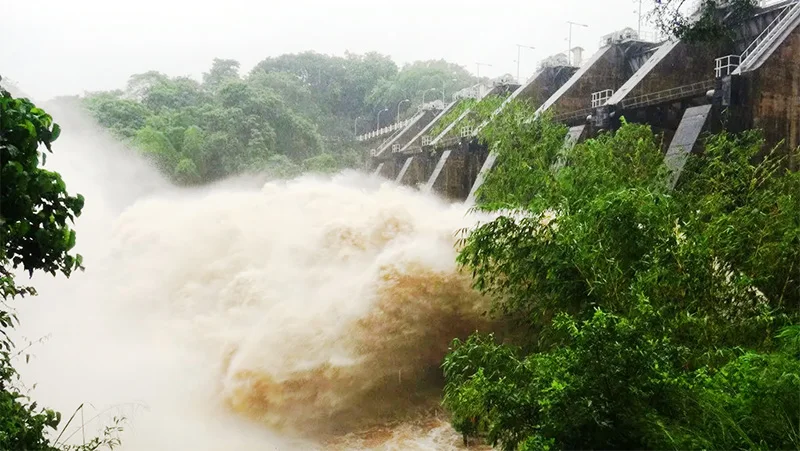
Most reservoirs in Sri Lanka are agriculture and hydropower dominated. Reservoir operators are often unwilling to acknowledge the flood detention capability of major reservoirs during the onset of monsoons. Deviating from the traditional priority for food production and hydropower development, it is time to reorient the operational approach of major reservoir operators under extreme events, where flood control becomes a vital function. While admitting that total elimination of flood impacts is not technically feasible, the impacts can be reduced by the efficient operation of reservoirs and effective early warning systems.
At the very outset, I would like to mention that the contents in this article are based on my personal experience in the Irrigation Department (ID), and there is no intention to disrespect their contributions during the most recent flood event. The objective is to improve the efficiency and the capability of the human resources available in the ID and other relevant institutions to better respond to future flood disasters.
Reservoir operation and flood forecasting
Reservoir management is an important aspect of water management, as water storage and release are crucial for managing floods and droughts. Several numerical models and guidelines have already been introduced to the ID and MASL during numerous training programs for reservoir management and forecasting of inflows.
This article highlights expectations of engineering professionals and discusses a framework for predicting reservoir inflows from its catchment by using the measured rainfall during the previous few days. Crucially, opening the reservoir gates must be timed to match the estimated inflow.
Similarly, rainfall-runoff relationships had been demonstrated and necessary training was provided to selected engineers during the past to make a quantitative (not qualitative) forecast of river water levels at downstream locations, based on the observed rainfall in the upstream catchment.
Already available information and technology
Furthermore, this article highlights the already available technology and addresses certain misinformation provided to the mass media by some professionals during recent discussions. These discrepancies are primarily related to the opening of reservoir gates and flood forecasting.
A. Assessing the 2025 Flood Magnitude
It is not logically sound to claim that the 2025 flood in the Kelani basin was the highest flood experienced historically. While, in terms of flood damage, it was probably the worst flood experienced due to rapid urbanisation in the lower Kelani basin. We have experienced many critical and dangerous floods in the past by hydraulic definition in the Kelani Ganga.
Historical water levels recorded at the Nagalagam Street gauge illustrate this point: (See Table)

In view of the above data, the highest water level recorded at the Nagalagam river gauge during the 2025 flood was 8.5 ft. This was a major flood, but not a critical or dangerous flood by definition.
B. Adherence to Reservoir Standing Orders
According to the standing orders of the ID, water levels in major reservoirs must be kept below the Full Supply Level (FSL) during the Northeast (NE) monsoon season (from October to March) until the end of December. According to my recollection, this operational height is 1.0m below the FSL. Therefore, maintaining a reservoir below the FSL during this period is not a new practice; it explicitly serves the dual purpose of dam safety and flood detention for the downstream areas.
C. Gate Operation Methodology
When a reservoir is reaching the FSL, the daily operation of gates is expected to be managed so that the inflow of water from the catchment rainfall is equal to the outflow through the spill gates (Inflow * Outflow). The methodology for estimating both the catchment inflow and the gate outflow is based on very simple formulas, which have been previously taught to the technical officers and engineers engaged in field operations.
D. Advanced Forecasting Capabilities
Sophisticated numerical models for rainfall-runoff relationships are available and known to subject specialists of the ID through the training provided over the last 40 years. For major reservoirs, the engineers in charge of field operations could be trained to estimate daily inflows to the reservoirs, especially in cases where the simple formulas mentioned in section C are not adequate.
Design concept of reservoir flood gates
Regarding the provision of reservoir spill gates, one must be mindful of the underlying principles of probability. Major reservoir spillways are designed for very high return periods, such as 1,000 and 10,000 years. If the spillway gates are opened fully when a reservoir is at full capacity, this can produce an artificial flood of a very large magnitude. A flood of such magnitude cannot occur under natural conditions. Therefore, reservoir operators must be mindful in this regard to avoid any artificial flood creation.
In reality, reservoir spillways are often designed for the sole safety of the reservoir structure, often compromising the safety of the downstream population. This design concept was promoted by foreign funding agencies in recent times to safeguard their investment for dams. Consequently, the discharge capacities of these spill gates significantly exceed the natural carrying capacity of river downstream. This design criterion requires serious consideration by future designers and policymakers.
Undesirable gate openings
The public often asks a basic question regarding flood hazards in a river system with reservoirs: Why is flooding more prominent downstream of reservoirs compared to the period before they were built? This concern is justifiable based on the following incidents.
For instance, why do Magama in Tissamaharama face flood threats after the construction of the massive Kirindi Oya reservoir? Similarly, why does Ambalantota flood after the construction of Udawalawe Reservoir? Furthermore, why is Molkawa in the Kalutara District area getting flooded so often after the construction of Kukule reservoir?
These situations exist in several other river basins too. Engineers must therefore be mindful of the need to strictly control the operation of reservoir gates by their field staff. The actual field situation can sometimes deviate significantly from the theoretical technology discussed in air- conditioned rooms. Due to this potential discrepancy, it is necessary to examine whether gate operators are strictly adhering to the operational guidelines, as gate operation currently relies too much on the discretion of the operator at the site.
In 2003, there was severe flood damage below Kaudulla reservoir in Polonnaruwa. I was instructed to find out the reason for this flooding by the then Minister of Mahaweli & Irrigation. During my field inspection, I found that the daily rainfall in the area had not exceeded 100mm, yet the downstream flood damage was unbelievable. I was certain that 100mm of rainfall could not create a flood of that magnitude. Further examination suggested that this was not a natural flood, but was created by the excessive release of water from the radial gates of the Kaudulla reservoir. There are several other similar incidents and those are beyond the space available for this document.
Revival of Innovative systems
It may be surprising to note the high quality of real-time flood forecasts issued by the ID for the Kelani River in the late 1980s and early 1990s. This was achieved despite the lack of modern computational skills and advanced communication systems. At that time, for instance, mobile phones were non-existent. Forecasts were issued primarily via the Sri Lanka Broadcasting Corporation (SLBC )in news bulletins.
A few examples of flood warning issued during the past available in official records of the ID are given below:
Forecast issued at 6th June 1989 at 5.00 PM
“The water level at Nagalagam street river gauge was at 9 ft 0 inches at 5.0 PM. This is 1.0 ft above the major flood level. Water level is likely to rise further, but not likely to endanger the Kelani flood bund”.
Eng. NGR. De Silva, Director Irrigation
Forecast issued at 30th Oct 1991 at 6.00 PM
“The water level at Nagalagam street river gauge was at 3 ft 3 inches at 6.0 PM. The water level likely to rise further during the next 24 hours, but will not exceed 5.0 ft.”
Eng. K.Yoganathan, Director Irrigation
Forecast issued at 6th June 1993 at 10.00 AM:
“The water level at Nagalagam street river gauge was at 4 ft 6 inches last night. The water level will not go above 5.0 ft within the next 24 hours.”
Eng. K.Yoganathan, Director Irrigation
Forecast issued at 8th June 1993 at 9.00 AM:
“The water level at Nagalagam Street River gauge was at 4 ft 6 inches at 7.00 AM. The water level will remain above 4.0 ft for the next 12 hours and this level will go below 4.0 ft in the night.
The water level is not expected to rise within next 24 hours.”
Eng.WNM Boteju,Director of Irrigation
Conclusion
Had this technology been consistently and effectively adopted, we could have significantly reduced the number of deaths and mitigated the unprecedented damage to our national infrastructure. The critical question then arises: Why is this known, established flood forecasting technology, already demonstrated by Sri Lankan authorities, not being put into practice during recent disasters? I will leave the answer to this question for social scientists, administrators and politicians in Sri Lanka.
Features
Rebuilding Sri Lanka for the long term
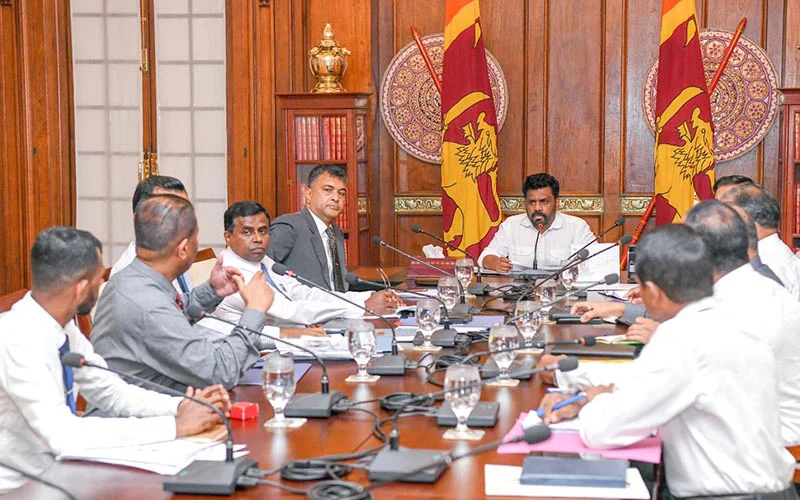
The government is rebuilding the cyclone-devastated lives, livelihoods and infrastructure in the country after the immense destruction caused by Cyclone Ditwah. President Anura Kumara Dissanayake has been providing exceptional leadership by going into the cyclone affected communities in person, to mingle directly with the people there and to offer encouragement and hope to them. A President who can be in the midst of people when they are suffering and in sorrow is a true leader. In a political culture where leaders have often been distant from the everyday hardships of ordinary people, this visible presence would have a reassuring psychological effect.
The international community appears to be comfortable with the government and has been united in giving it immediate support. Whether it be Indian and US helicopters that provided essential airlift capacity or cargo loads of relief material that have come from numerous countries, or funds raised from the people of tiny Maldives, the support has given Sri Lankans the sense of being a part of the world family. The speed and breadth of this response has contrasted sharply with the isolation Sri Lanka experienced during some of the darker moments of its recent past.
There is no better indicator of the international goodwill to Sri Lanka as in the personal donations for emergency relief that have been made by members of the diplomatic corps in Sri Lanka. Such gestures go beyond formal diplomacy and suggest a degree of personal confidence in the direction in which the country is moving. The office of the UN representative in Sri Lanka has now taken the initiative to launch a campaign for longer term support, signalling that emergency assistance can be a bridge to sustained engagement rather than a one-off intervention.
Balanced Statement
In a world that has turned increasingly to looking after narrow national interests rather than broad common interests, Sri Lanka appears to have found a way to obtain the support of all countries. It has received support from countries that are openly rivals to each other. This rare convergence reflects a perception that Sri Lanka is not seeking to play one power against another, and balancing them, but rather to rebuild itself on the basis of stability, inclusiveness and responsible governance.
An excerpt from an interview that President Dissanayake gave to the US based Newsweek magazine is worth reproducing. In just one paragraph he has summed up Sri Lankan foreign policy that can last the test of time. A question Newsweek put to the president was: “Sri Lanka sits at the crossroads of Chinese built infrastructure, Indian regional influence and US economic leverage. To what extent does Sri Lanka truly retain strategic autonomy, and how do you balance these relationships?”
The president replied: “India is Sri Lanka’s closest neighbour, separated by about 24 km of ocean. We have a civilisational connection with India. There is hardly any aspect of life in Sri Lanka that is not connected to India in some way or another. India has been the first responder whenever Sri Lanka has faced difficulty. India is also our largest trading partner, our largest source of tourism and a significant investor in Sri Lanka. China is also a close and strategic partner. We have a long historic relationship—both at the state level and at a political party level. Our trade, investment and infrastructure partnership is very strong. The United States and Sri Lanka also have deep and multifaceted ties. The US is our largest market. We also have shared democratic values and a commitment to a rules-based order. We don’t look at our relations with these important countries as balancing. Each of our relationships is important to us. We work with everyone, but always with a single purpose – a better world for Sri Lankans, in a better world for all.”
Wider Issues
The President’s articulation of foreign relations, especially the underlying theme of working with everyone for the wellbeing of all, resonates strongly in the context of the present crisis. The willingness of all major partners to assist Sri Lanka simultaneously suggests that goodwill generated through effective disaster response can translate into broader political and diplomatic space. Within the country, the government has been successful in calling for and in obtaining the support of civil society which has an ethos of filling in gaps by seeking the inclusion of marginalised groups and communities who may be left out of the mainstream of development.
Civil society organisations have historically played a crucial role in Sri Lanka during times of crisis, often reaching communities that state institutions struggle to access. Following a meeting with CSOs, at which the president requested their support and assured them of their freedom to choose, the CSOs mobilised in all flood affected parts of the country, many of them as part of a CSO Collective for Emergency Response. An important initiative was to undertake the task of ascertaining the needs of the cyclone affected people. Volunteers from a number of civil society groups fanned out throughout the country to collect the necessary information. This effort helped to ground relief efforts in real needs rather than assumptions, reducing duplication and ensuring that assistance reached those most affected.
The priority that the government is currently having to give to post-cyclone rebuilding must not distract it from giving priority attention to dealing with postwar issues. The government has the ability and value-system to resolve other national problems. Resolving issues of post disaster rebuilding in the aftermath of the cyclone have commonalities in relation to the civil war that ended in 2009. The failure of successive governments to address those issues has prompted the international community to continuously question and find fault with Sri Lanka at the UN. This history has weighed heavily on Sri Lanka’s international standing and has limited its ability to fully leverage external support.
Required Urgency
At a time when the international community is demonstrating enormous goodwill to Sri Lanka, the lessons learnt from their own experiences, and the encouraging support they are giving Sri Lanka at present, can and must be utilised. The government under President Dissanayake has committed to a non-racist Sri Lanka in which all citizens will be treated equally. The experience of other countries, such as the UK, India, Switzerland, Canada and South Africa show that problems between ethnic communities also require inter community power sharing in the form of devolution of power. Countries that have succeeded in reconciling diversity with unity have done so by embedding inclusion into governance structures rather than treating it as a temporary concession.
Sri Lanka’s present moment of international goodwill provides a rare opening to learn from these experiences with the encouragement and support of its partners, including civil society which has shown its readiness to join hands with the government in working for the people’s wellbeing. The unresolved problems of land resettlement, compensation for lost lives and homes, finding the truth about missing persons continue to weigh heavily on the minds and psyche of people in the former war zones of the north and east even as they do so for the more recent victims of the cyclone.
Unresolved grievances do not disappear with time. They resurface periodically, often in moments of political transition or social stress, undermining national cohesion. The government needs to ensure sustainable solutions not only to climate related development, but also to ethnic peace and national reconciliation. The government needs to bring together the urgency of disaster recovery with the long-postponed task of political reform as done in the Indonesian province of Aceh in the aftermath of the 2004 tsunami for which it needs bipartisan political support. Doing so could transform a national tragedy into a turning point for long lasting unity and economic take-off.
by Jehan Perera
-
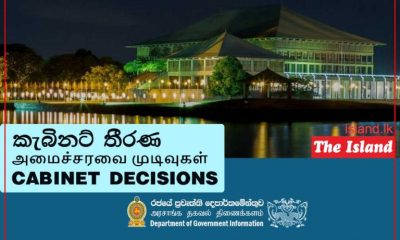
 Business6 days ago
Business6 days agoCabinet approves establishment of two 50 MW wind power stations in Mullikulum, Mannar region
-

 News7 days ago
News7 days agoGota ordered to give court evidence of life threats
-

 Features7 days ago
Features7 days agoCliff and Hank recreate golden era of ‘The Young Ones’
-
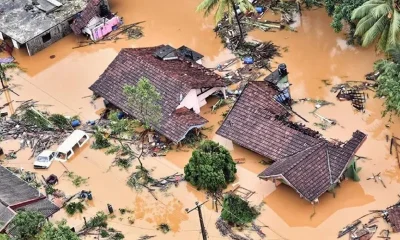
 Features7 days ago
Features7 days agoSri Lanka and Global Climate Emergency: Lessons of Cyclone Ditwah
-

 Editorial7 days ago
Editorial7 days agoExperience vs. Inexperience
-

 News7 days ago
News7 days agoWFP scales up its emergency response in Sri Lanka
-

 Features4 days ago
Features4 days agoWhy Sri Lanka Still Has No Doppler Radar – and Who Should Be Held Accountable
-

 Features6 days ago
Features6 days agoDitwah: A Country Tested, A People United


